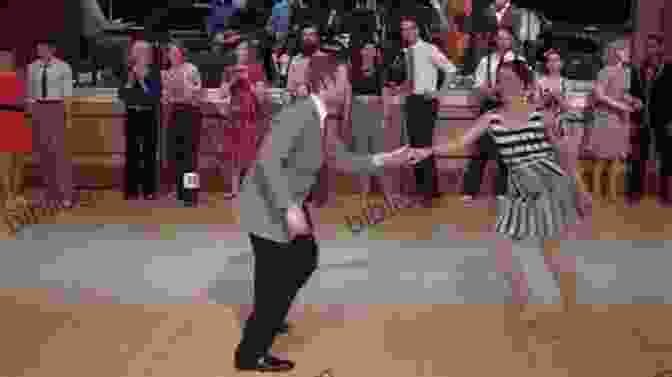The 1950s was a transformative decade that witnessed the birth of rock 'n' roll, a genre that revolutionized music and culture worldwide. Along with the infectious melodies and captivating rhythms came a vibrant array of dances that swept across the nation, igniting a passion for expression and social connection on the American dance floor.
The Jitterbug: A Symphony of Energy

4 out of 5
| Language | : | English |
| File size | : | 2420 KB |
| Text-to-Speech | : | Enabled |
| Screen Reader | : | Supported |
| Word Wise | : | Enabled |
| Print length | : | 141 pages |
The Jitterbug, with its frenetic pace and acrobatic moves, epitomized the unbridled energy of rock 'n' roll. Its origins can be traced back to the Lindy Hop, a swing dance that emerged in the 1930s. As rock 'n' roll gained popularity, the Jitterbug evolved into a more energetic and improvised form, incorporating elements of swing, boogie-woogie, and even tap.
Performing the Jitterbug required both skill and athleticism. Dancers rotated, jumped, and performed intricate footwork in perfect synchrony. The dance demanded a deep connection between partners, as each movement flowed effortlessly from one to the other.
The Twist: A Dance Craze that Swept the Nation
In 1960, a new dance emerged from the streets of Philadelphia that would captivate the nation: the Twist. Simple yet incredibly infectious, the Twist involved a series of alternating hip movements to the beat of the music. Its popularity exploded after Chubby Checker's hit song "The Twist" became a global sensation.
The Twist's simplicity made it accessible to people of all ages and backgrounds. It became a symbol of freedom and rebellion, as young people embraced the dance as a way to express themselves and break away from societal norms.
Other Iconic Dances of the 1950s
- The Stroll: A laid-back dance that involved partners walking side-by-side and performing occasional swivels and arm movements.
- The Hand Jive: A lively dance where partners faced each other and clapped their hands in intricate patterns.
- The Bop: A high-energy dance that featured energetic jumps and kicks in time with the music.
Social Significance of 1950s Dance

The rock 'n' roll dances of the 1950s played a significant social role. They provided a common ground for teenagers and young adults to interact, socialize, and express their individuality. The dance floor became a melting pot of different backgrounds and cultures, fostering a sense of community and belonging.
These dances also had a profound impact on fashion, as they influenced the clothing and hairstyles of the era. Dancers wore loose, comfortable clothing that allowed for freedom of movement, such as poodle skirts, saddle shoes, and crew necks.
The rock 'n' roll dances of the 1950s remain an indelible part of American cultural history. From the energetic Jitterbug to the infectious Twist, these dances captured the spirit of a generation and continue to inspire and entertain people around the world.
They not only provided a means of entertainment but also played a vital social role, breaking down barriers, fostering connections, and leaving a lasting legacy on American society and culture.


























































































